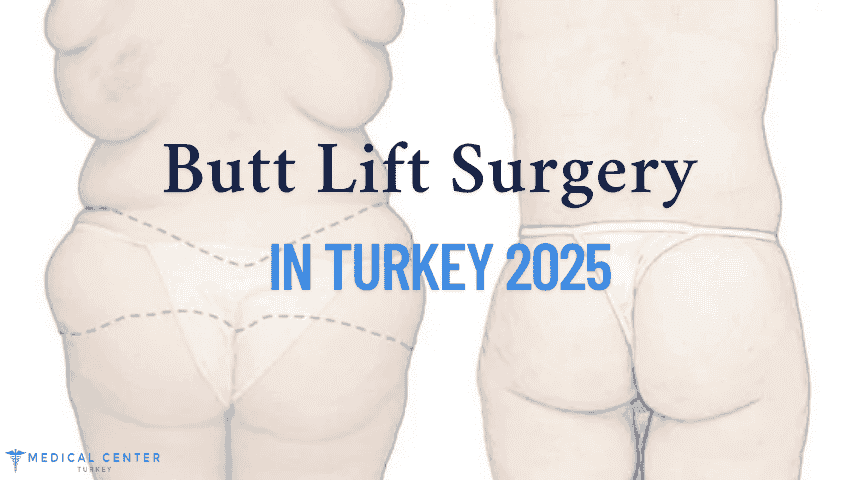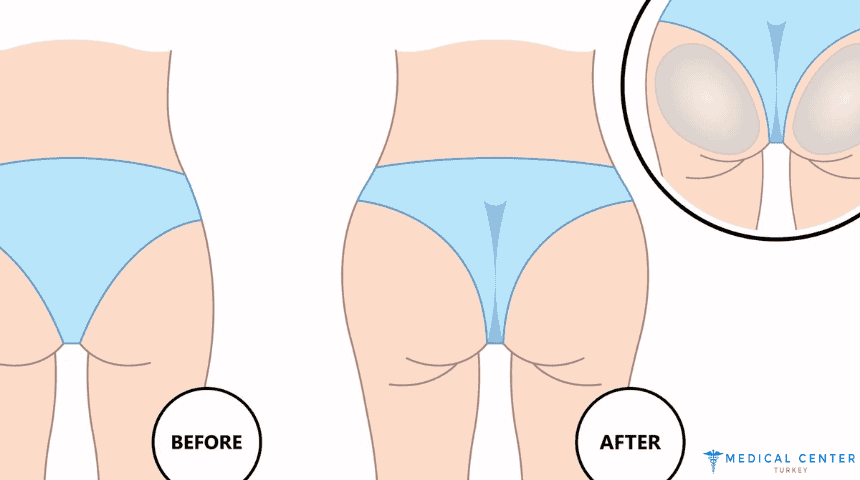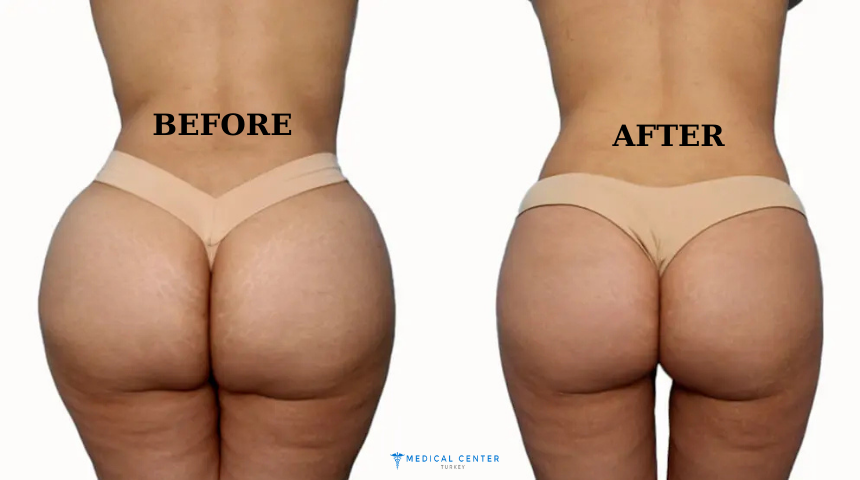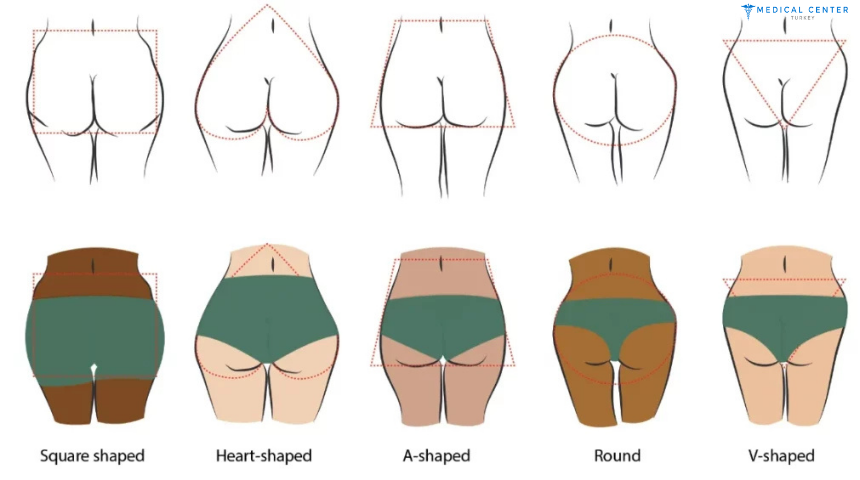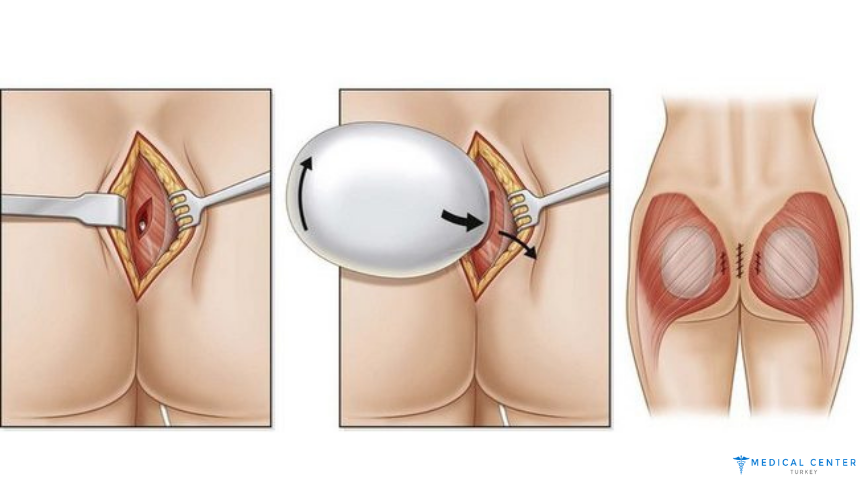Butt Lift Surgery in Turkey in 2025
Butt Lift Surgery in Turkey in 2025 is an article that aims to give you all the information you do not know about Butt Lift Surgery and more. We kindly shared the main headings with you;
What is butt lift surgery and how is it performed?
Butt lift surgery is a cosmetic procedure designed to reshape and enhance the appearance of the buttocks. It helps improve sagging, flatness, or loss of volume in the area. There are different types of butt lift procedures, but they all aim to give a more lifted, firm, and youthful shape.
In a traditional butt lift, excess skin and fat are removed from the upper buttock area. The remaining skin is then tightened to create a smoother and more contoured look. This method is usually ideal for patients who have lost a lot of weight and are dealing with loose or stretched skin.
Another popular technique is the Brazilian Butt Lift (BBL), which involves liposuction to remove fat from areas like the abdomen or thighs. This fat is then purified and injected into the buttocks to add volume and improve shape. Because it uses the patient’s fat, the results tend to look and feel natural.
The surgery is performed under general anesthesia and typically takes two to four hours, depending on the technique. Most patients go home the same day or after a short stay at the clinic.
Butt lift surgery is a safe and effective way to enhance body proportions and boost confidence, especially when performed by an experienced surgeon.
Why do people choose Turkey for butt lift procedures?
Turkey has become one of the top destinations for cosmetic procedures, including butt lift surgeries, and there are several good reasons for this trend. First and foremost is affordability. Compared to countries like the US, UK, or Germany, cosmetic surgeries in Turkey are much more budget-friendly. This allows patients to receive high-quality care at a lower cost.
Another major advantage is the high level of expertise among Turkish plastic surgeons. Many are internationally trained and have years of experience, especially in procedures like Brazilian Butt Lifts. The country’s large volume of patients also means surgeons perform these surgeries often, which helps improve their technique and outcomes.
Turkey’s clinics are modern, well-equipped, and often internationally accredited. Many offer all-inclusive packages that cover the surgery, hospital stay, accommodation, transfers, and even post-operative care. These packages make the process easier and more convenient for international visitors.
Cities like Istanbul and Antalya offer beautiful settings for recovery. Many patients combine their procedure with a short vacation, enjoying Turkish hospitality and culture.
English-speaking medical staff and personalized care also make Turkey a comfortable and welcoming place for international patients. With affordable prices, skilled doctors, and excellent service, it’s clear why so many people choose Turkey for their butt lift surgeries.
What is the difference between a traditional butt lift and a Brazilian Butt Lift (BBL)?
Both the traditional butt lift and the Brazilian Butt Lift (BBL) aim to improve the shape and appearance of the buttocks, but they are quite different in technique and purpose.
A traditional butt lift is mainly focused on removing excess, sagging skin. This is often the best option for patients who have lost a lot of weight and are left with loose skin around the buttocks. During this procedure, the surgeon makes an incision, usually along the upper buttocks or lower back, to remove skin and sometimes fat. The remaining skin is tightened to lift the area. While this can create a smoother look, it doesn’t add volume.
A Brazilian Butt Lift (BBL) adds volume and reshapes the buttocks using fat from the patient’s own body. Fat is harvested through liposuction, purified, and then injected into specific areas of the buttocks. This allows for more customized shaping and a fuller, rounder appearance.
The BBL is popular for creating a more curvy and youthful look, while the traditional lift is often chosen for tightening and skin removal. Some patients may even combine both procedures for optimal results.
The traditional lift tightens and firms, while the BBL adds volume and contour, each suited to different needs and body types.
You can contact us if you want to get more detailed information about our packages related to this treatment. Just click on the link below.
How long does it take to recover from butt lift surgery?
Recovery time after a butt lift surgery depends on the type of procedure performed and the patient’s overall health. In general, most patients need around two to four weeks before returning to light daily activities. Full recovery may take up to six to eight weeks, especially if both a lift and fat transfer (BBL) are involved.
During the first few days after surgery, swelling, bruising, and discomfort are common. Pain is usually manageable with prescribed medications. Patients are advised to avoid sitting or lying directly on their buttocks for at least two weeks. Special pillows or cushions are used to relieve pressure during sitting.
For BBL patients, protecting the injected fat is very important. Any pressure on the buttocks can affect fat survival, so careful positioning is essential. Light walking is encouraged early on to promote circulation, but strenuous activity or heavy lifting should be avoided for at least four to six weeks.
Compression garments are usually worn for several weeks to reduce swelling and support healing. Follow-up appointments allow the surgeon to monitor progress and make sure there are no complications.
Recovery requires patience and commitment to aftercare instructions. Most patients begin to see initial results after a few weeks, with final results becoming more visible over several months as the body heals and swelling decreases.
Are the results of a butt lift permanent?
The results of a butt lift can be long-lasting, but they are not entirely permanent. How long the results last depends on the type of procedure, the patient’s lifestyle, and natural aging.
In a traditional butt lift, where excess skin is removed and the area is tightened, the effects can last for many years. However, aging, gravity, and changes in body weight can eventually affect the results. Maintaining a stable weight and staying active helps keep the shape looking good over time.
With a Brazilian Butt Lift (BBL), where fat is transferred to the buttocks, the long-term results depend on how well the fat cells survive after the procedure. Typically, around 60% to 80% of the transferred fat remains in place. Once the fat has settled, usually after three to six months, it behaves like natural body fat. This means it will grow or shrink with weight changes, just like the rest of the body.
To maintain results, patients are advised to eat a healthy diet, exercise regularly, and avoid significant weight fluctuations. Smoking and poor lifestyle habits can negatively affect both healing and long-term outcomes.
While a butt lift doesn’t stop the natural aging process, the results can last for many years if proper care is taken. Regular follow-ups with the surgeon can also help track and preserve the outcome.
What are the potential risks or complications of butt lift surgery?
Butt lift surgery, like any cosmetic procedure, carries some risks. While most patients experience smooth recoveries, it’s important to be aware of possible complications and how to minimize them.
Common side effects include swelling, bruising, and discomfort, especially in the first week after surgery. These symptoms usually fade with time and proper care. Infections, though rare, can occur if wounds are not kept clean. That’s why following hygiene and aftercare instructions is critical.
With Brazilian Butt Lift (BBL) procedures, one of the most important risks is related to fat embolism. If fat is accidentally injected into a blood vessel, it can travel to the lungs or heart, which is dangerous. However, experienced surgeons now use safer techniques that greatly reduce this risk. Choosing a qualified and board-certified plastic surgeon is key to safety.
Other possible complications include asymmetry, fat absorption (where some of the transferred fat disappears), or scarring, especially in traditional lift procedures.
Numbness or temporary loss of sensation can also occur in the treated area but usually improves over time. In very rare cases, patients may need a revision surgery to improve results or correct issues.
To minimize risks, it’s essential to choose a reputable clinic, follow all pre- and post-operative guidelines, and communicate openly with your medical team.
If you need more detailed information and support, you can contact our team. Just click on the link below.
